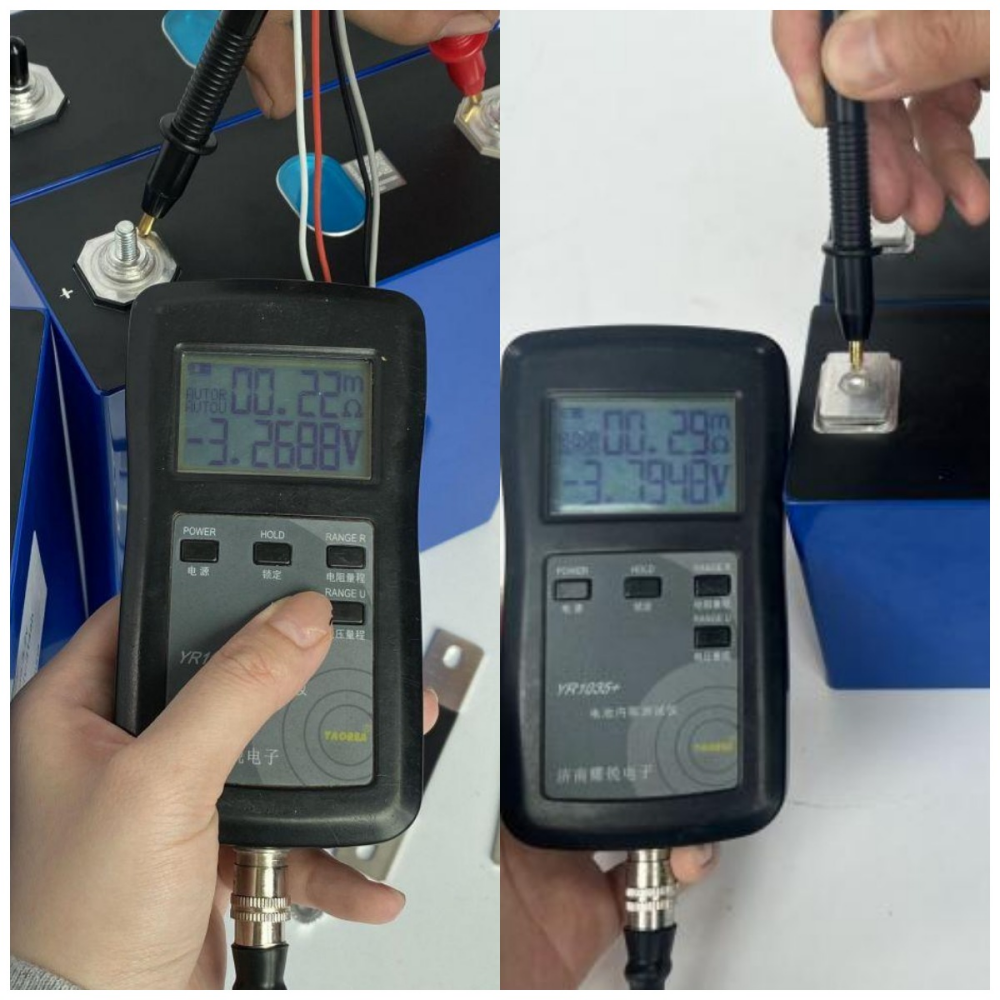If there is no label for us to distinguish, how can we distinguish between ternary batteries and lithium iron phosphate batteries?
1. Check the voltage:
Use a multimeter to measure the nominal voltage of the battery after it has been left to rest. The nominal voltage of a NMC lithium battery is generally 3.6V-3.7V (about 4.2V when fully charged). Lithium iron phosphate battery: nominal voltage 3.2V (about 3.6-3.65V when fully charged).

2. Observe the appearance:
weight comparison.:Under the same capacity, lithium iron phosphate battery is heavier.
Appearance characteristics: Before the lithium iron phosphate battery is filmed, the outer shell is mostly dark gray, and some manufacturers print the "LFP" logo;NMC lithium battery: The shell color is light, usually gray or silver.
Appearance characteristics: Before the lithium iron phosphate battery is filmed, the outer shell is mostly dark gray, and some manufacturers print the "LFP" logo;NMC lithium battery: The shell color is light, usually gray or silver.
3. Test performance:
Charging speed and high temperature resistance: Lithium iron phosphate batteries charge relatively slowly, but have strong high temperature resistance and are more suitable for high temperature environments. NMC lithium batteries have high charging efficiency and support fast charging, but have poor high temperature stability and are prone to heat in summer.
Cycle life aids judgment: The cycle life of lithium iron phosphate batteries is usually more than 2,000 times, and that of NMC lithium batteries is about 800-1,200 times. If the capacity of the battery is still high after many years of use, it may be lithium iron phosphate.
Cycle life aids judgment: The cycle life of lithium iron phosphate batteries is usually more than 2,000 times, and that of NMC lithium batteries is about 800-1,200 times. If the capacity of the battery is still high after many years of use, it may be lithium iron phosphate.
 +86 13332949210
+86 13332949210 info@xihobattery.com
info@xihobattery.com







 Xiho
Xiho Mar 31 2025
Mar 31 2025









